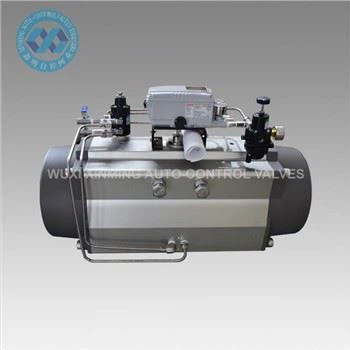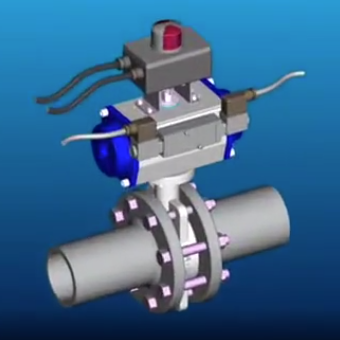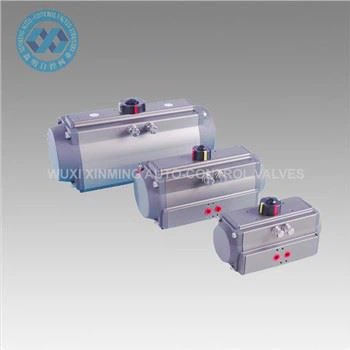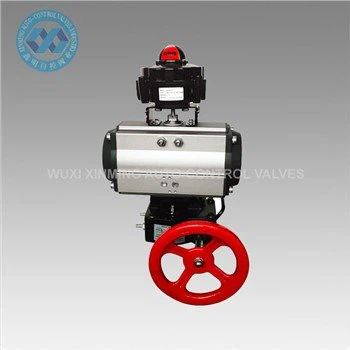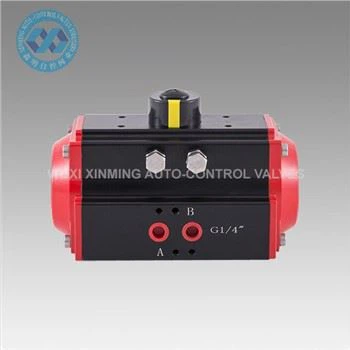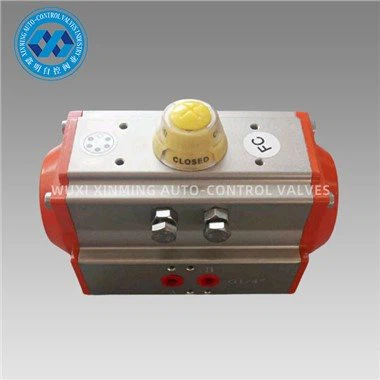Introduction
Pneumatic rotary actuators are widely used in automation systems for precise angular motion control. Integrating limit switches enhances their functionality by providing position feedback, ensuring accurate stopping points, and improving safety. This article explores the design, operation, and applications of pneumatic rotary actuators with limit switches, along with key selection criteria.
Key Components and Working Principle
1. Pneumatic Rotary Actuator Types
Common designs include:
- Rack-and-Pinion: High torque, precise rotation (typically 90° or 180°).
- Vane-Type: Compact, suitable for limited angular movement (up to 270°).
- Scotch Yoke: High torque for heavy-duty applications.
2. Limit Switches in Rotary Actuators
Limit switches are electromechanical or magnetic sensors that detect actuator position and send signals to the control system.
- Mechanical Limit Switches: Physical contact triggers the switch.
- Magnetic (Reed) Switches: Non-contact sensing using magnets.
- Proximity Sensors: Inductive or capacitive detection for high-precision applications.
How It Works:
- The actuator rotates under pneumatic pressure.
- A cam or magnet attached to the shaft triggers the limit switch at preset angles.
- The switch sends a signal to the PLC or control system to stop air flow or initiate the next action.
Advantages of Using Limit Switches
- Precise Positioning: Ensures repeatable stopping angles (e.g., 90°, 180°).
- Safety: Prevents over-rotation, reducing mechanical stress.
- Automation Integration: Enables feedback for sequential operations.
- Reduced Downtime: Immediate fault detection if the actuator fails to reach position.
Applications
- Valve Control: Shut-off and diverting valves in process industries.
- Material Handling: Indexing tables, part positioning in assembly lines.
- Packaging Machinery: Rotary sealing, capping, and labeling systems.
- Robotics: End-effector rotation with controlled stops.
Selection Criteria
When choosing a pneumatic rotary actuator with limit switches, consider:
Installation and Maintenance Tips
- Align Switches Properly: Adjust cam/magnet position for accurate triggering.
- Check Air Supply: Ensure consistent pressure to avoid incomplete rotation.
- Lubrication: Use recommended lubricants for seals and bearings.
- Inspect Switches: Regularly test electrical contacts for wear or misalignment.
Conclusion
Pneumatic rotary actuators with limit switches provide reliable, automated angular motion control in industrial systems. By integrating position feedback, they enhance precision, safety, and process efficiency. Engineers should carefully evaluate torque, rotation angle, and switch type to optimize performance for specific applications.
If you want to learn more about low-priced products, please visit the following website: www.xm-valveactuator.com


